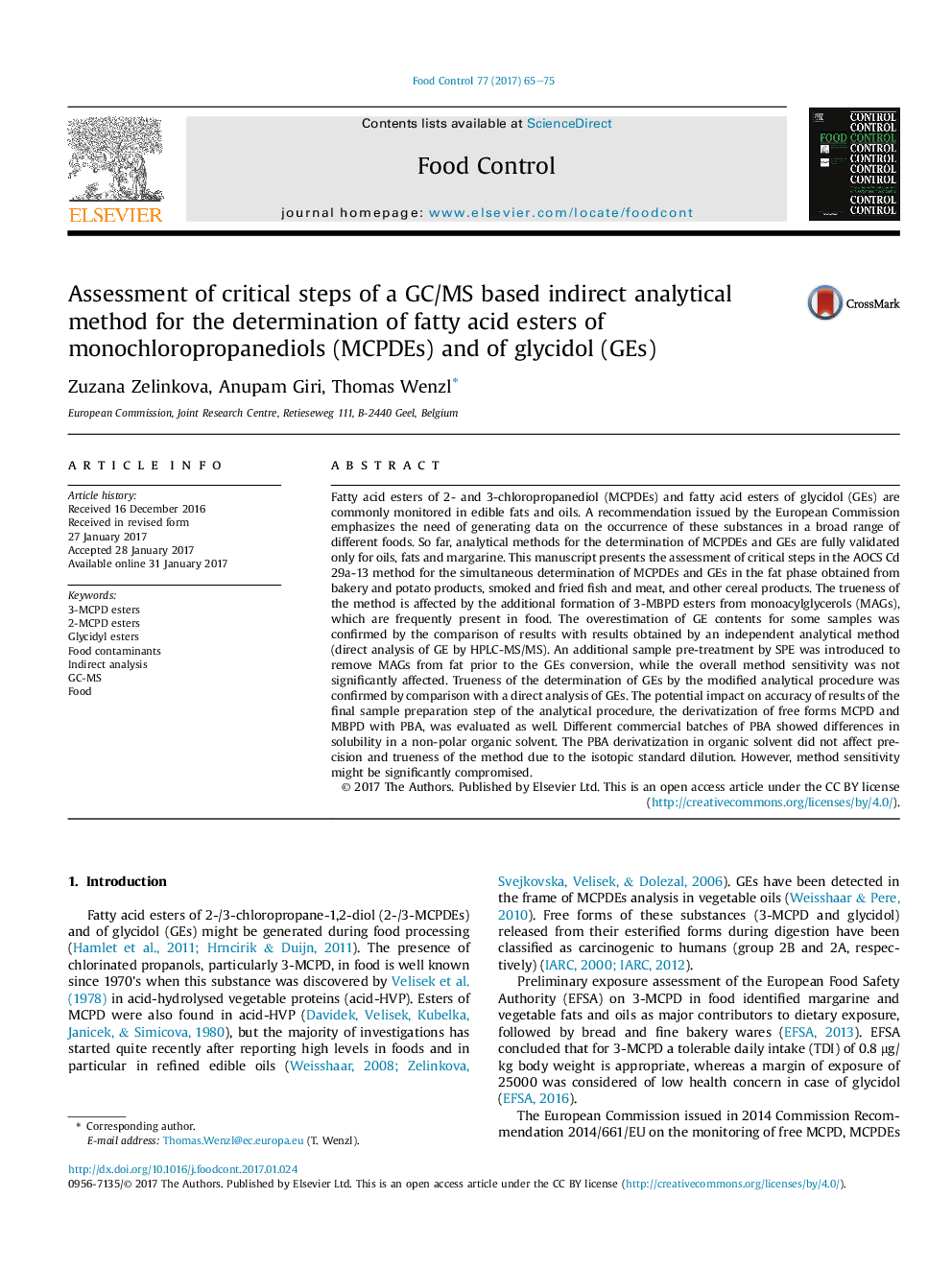| Article ID | Journal | Published Year | Pages | File Type |
|---|---|---|---|---|
| 5767552 | Food Control | 2017 | 11 Pages |
â¢Esters of monochloropropanediols and glycidyl esters are food contaminants generated during food processing.â¢Extension of an analytical method standardised for oils and fats to other food matrices is critically evaluated.â¢Trueness of the method was assessed by comparision with other independent method.â¢Presence of monoacylglycerols in food sample caused biased results of glycidyl esters.â¢Additional SPE clean-up is introduce to accurate analytical results.
Fatty acid esters of 2- and 3-chloropropanediol (MCPDEs) and fatty acid esters of glycidol (GEs) are commonly monitored in edible fats and oils. A recommendation issued by the European Commission emphasizes the need of generating data on the occurrence of these substances in a broad range of different foods. So far, analytical methods for the determination of MCPDEs and GEs are fully validated only for oils, fats and margarine. This manuscript presents the assessment of critical steps in the AOCS Cd 29a-13 method for the simultaneous determination of MCPDEs and GEs in the fat phase obtained from bakery and potato products, smoked and fried fish and meat, and other cereal products. The trueness of the method is affected by the additional formation of 3-MBPD esters from monoacylglycerols (MAGs), which are frequently present in food. The overestimation of GE contents for some samples was confirmed by the comparison of results with results obtained by an independent analytical method (direct analysis of GE by HPLC-MS/MS). An additional sample pre-treatment by SPE was introduced to remove MAGs from fat prior to the GEs conversion, while the overall method sensitivity was not significantly affected. Trueness of the determination of GEs by the modified analytical procedure was confirmed by comparison with a direct analysis of GEs. The potential impact on accuracy of results of the final sample preparation step of the analytical procedure, the derivatization of free forms MCPD and MBPD with PBA, was evaluated as well. Different commercial batches of PBA showed differences in solubility in a non-polar organic solvent. The PBA derivatization in organic solvent did not affect precision and trueness of the method due to the isotopic standard dilution. However, method sensitivity might be significantly compromised.
